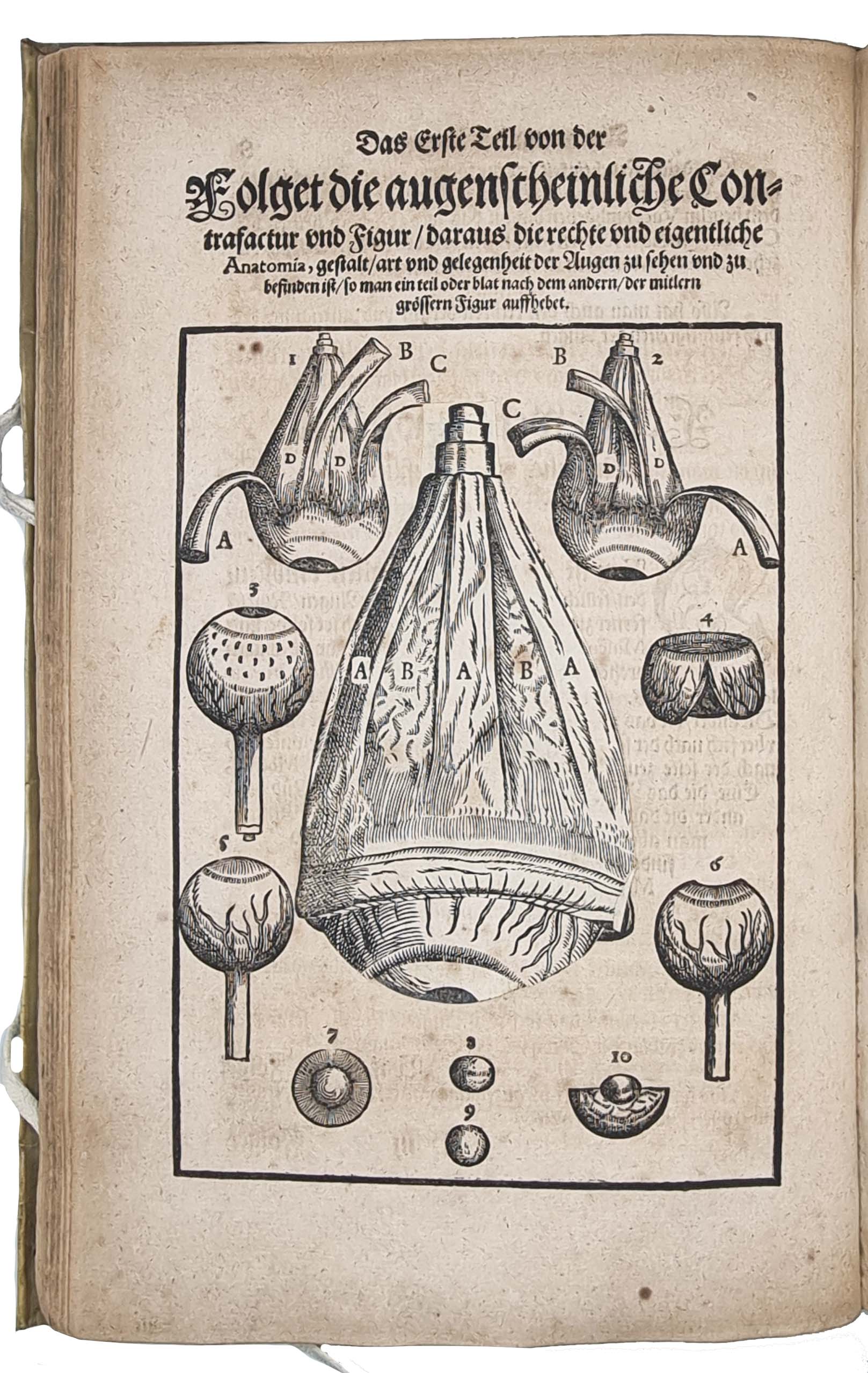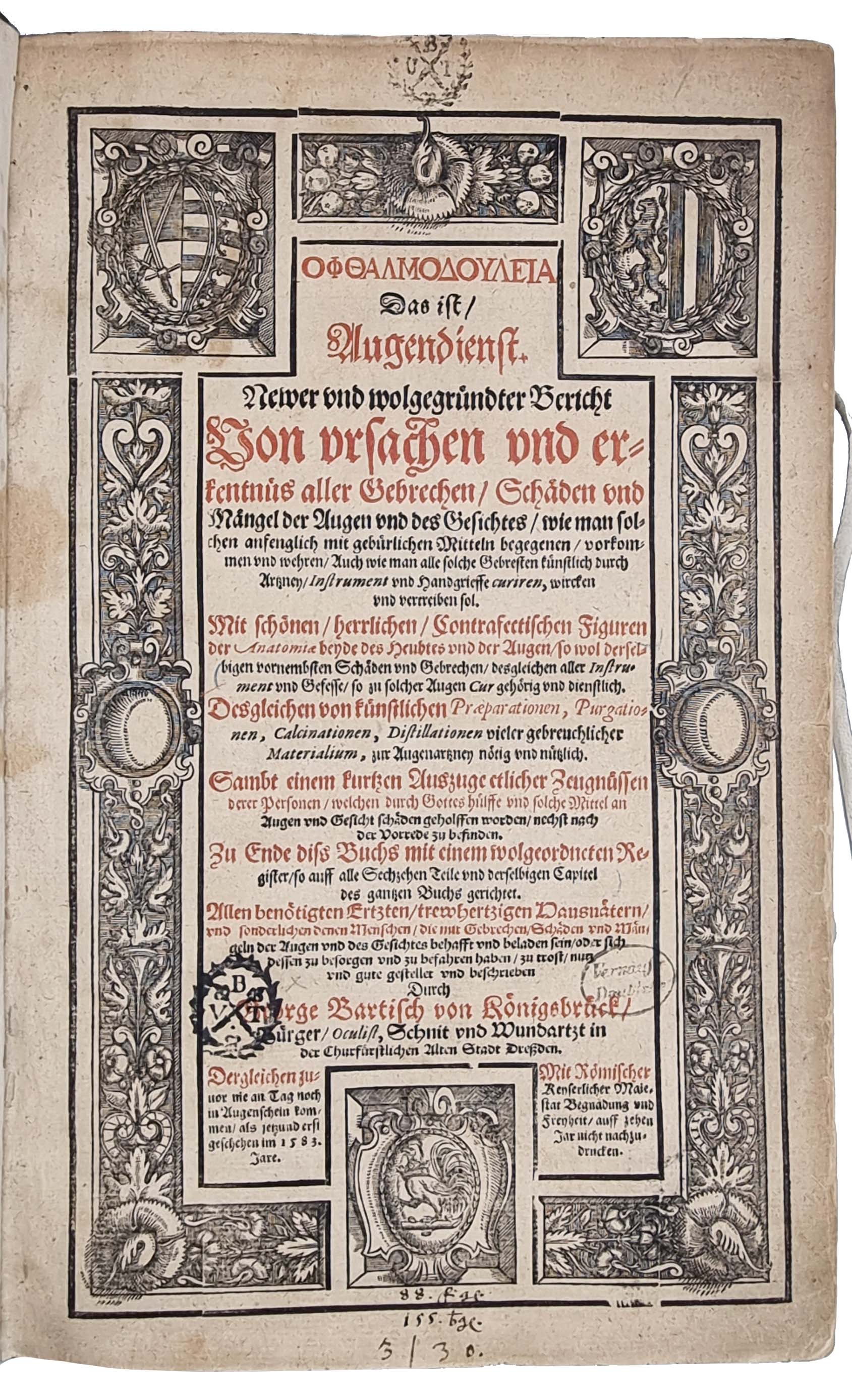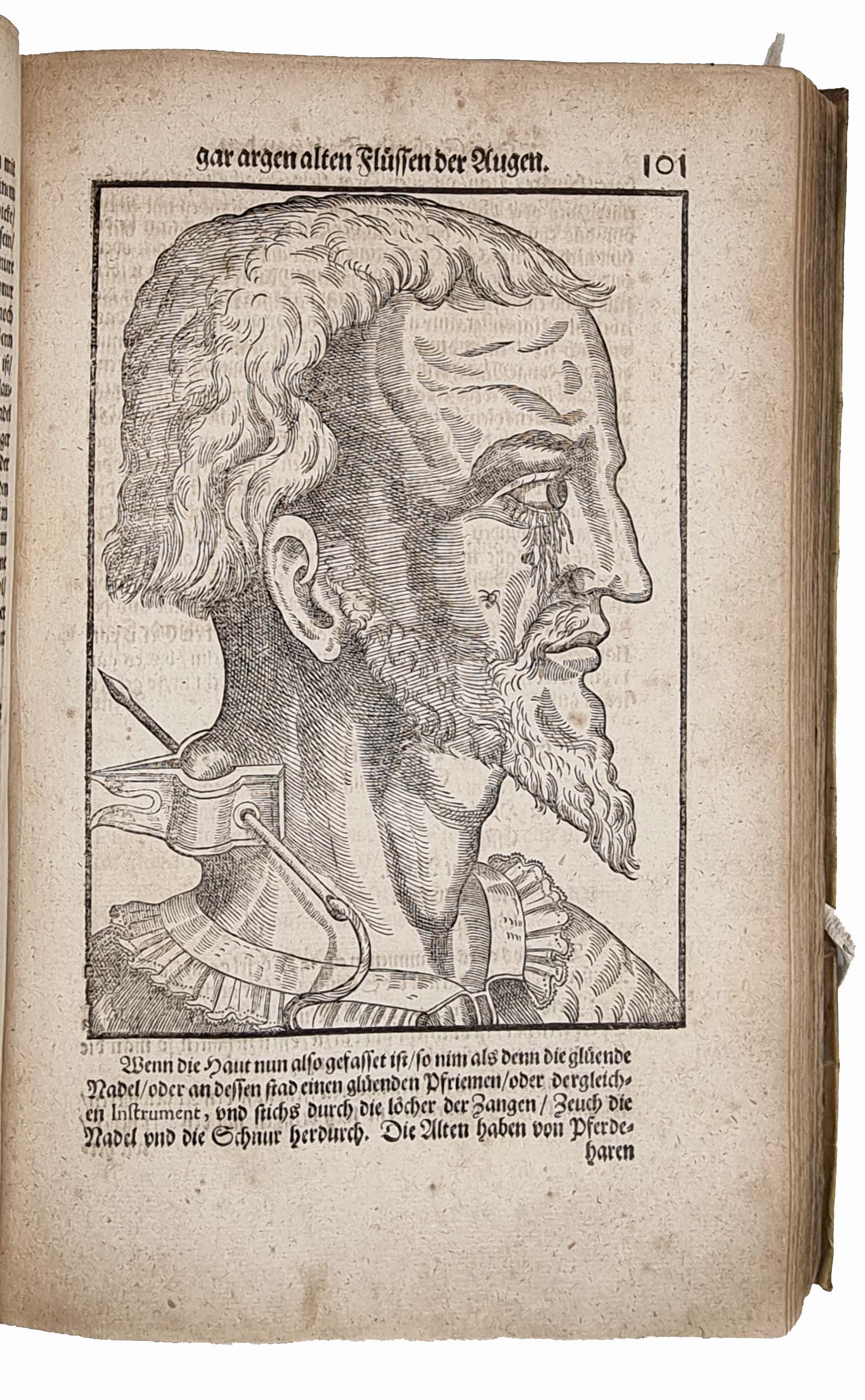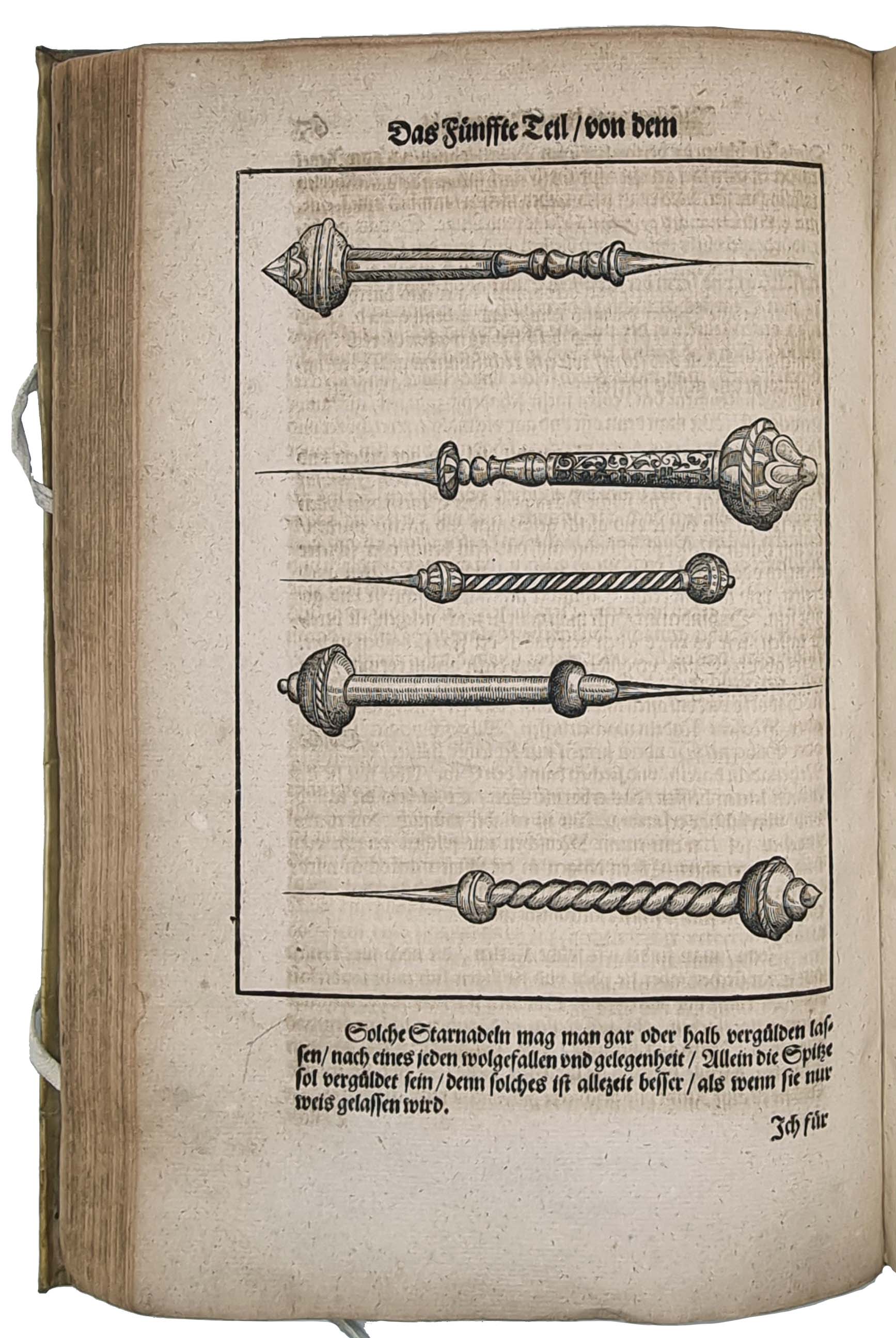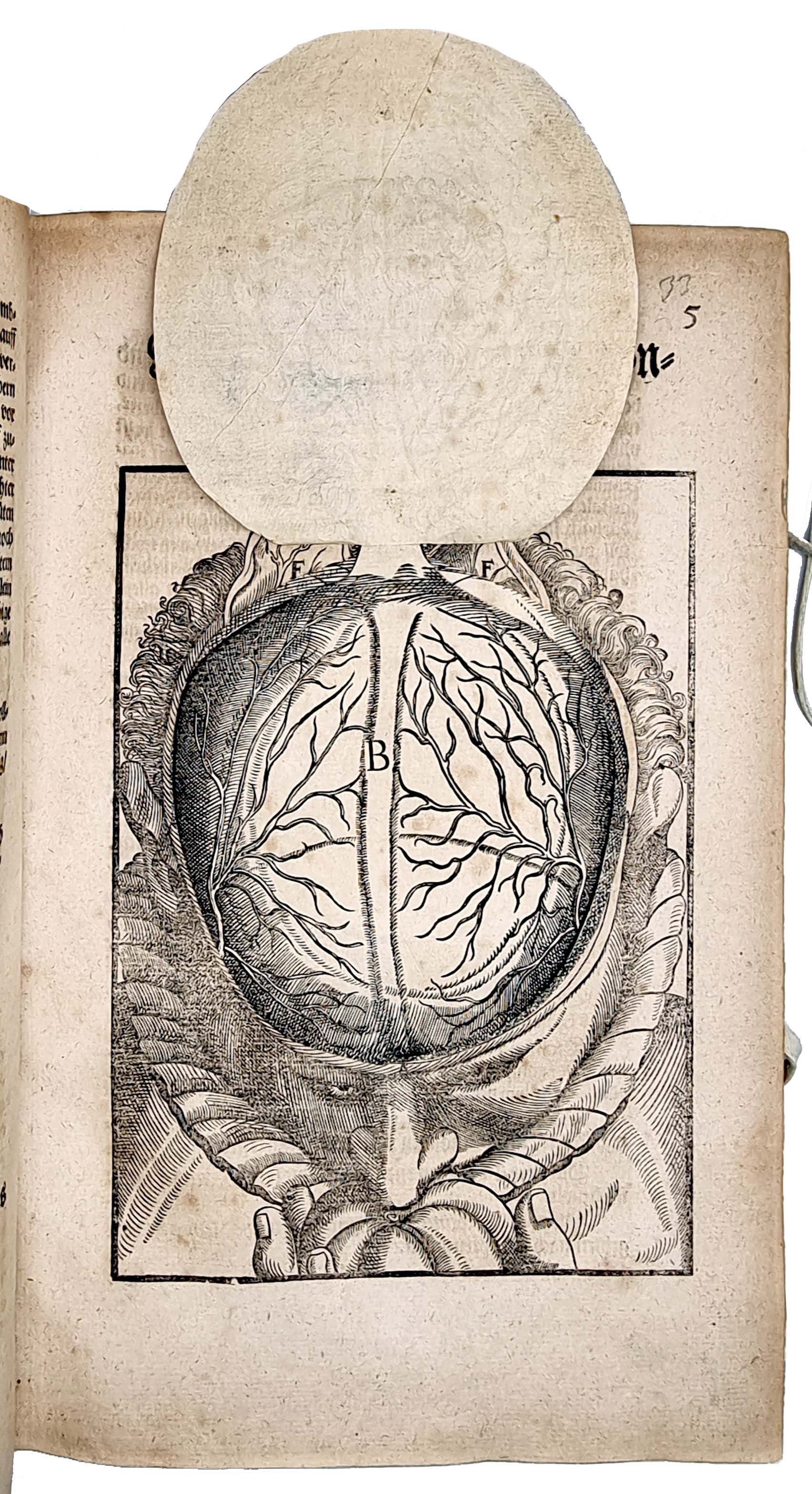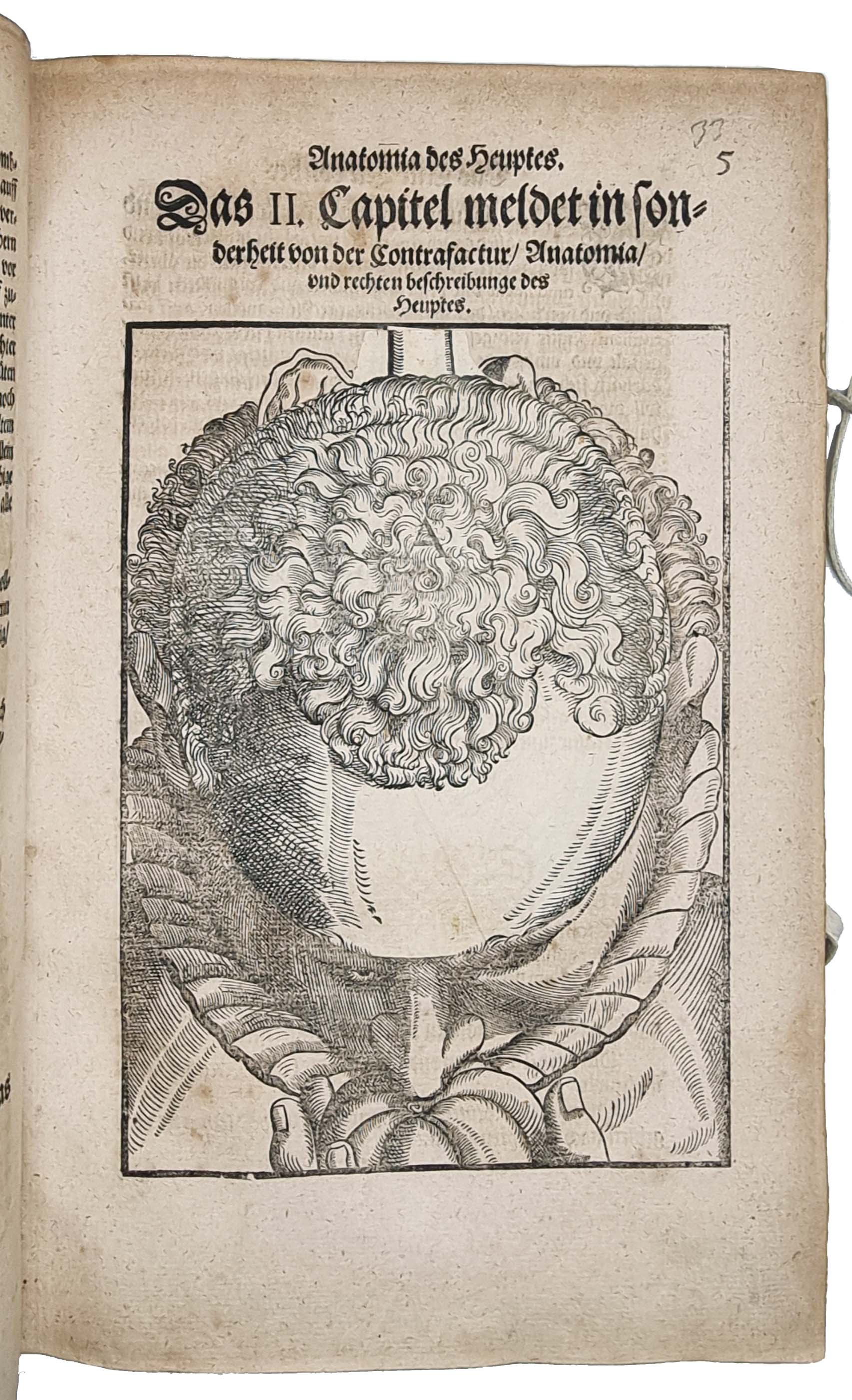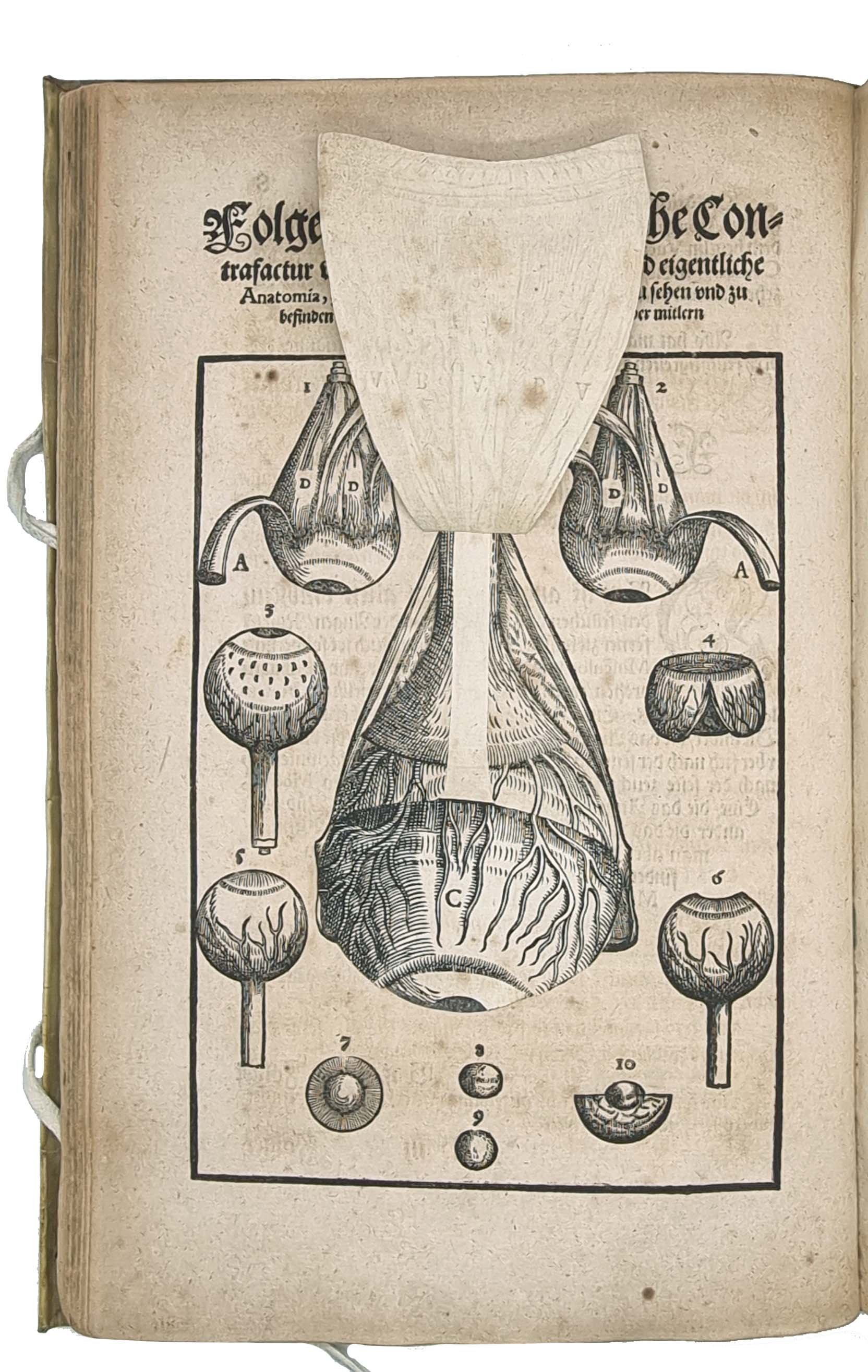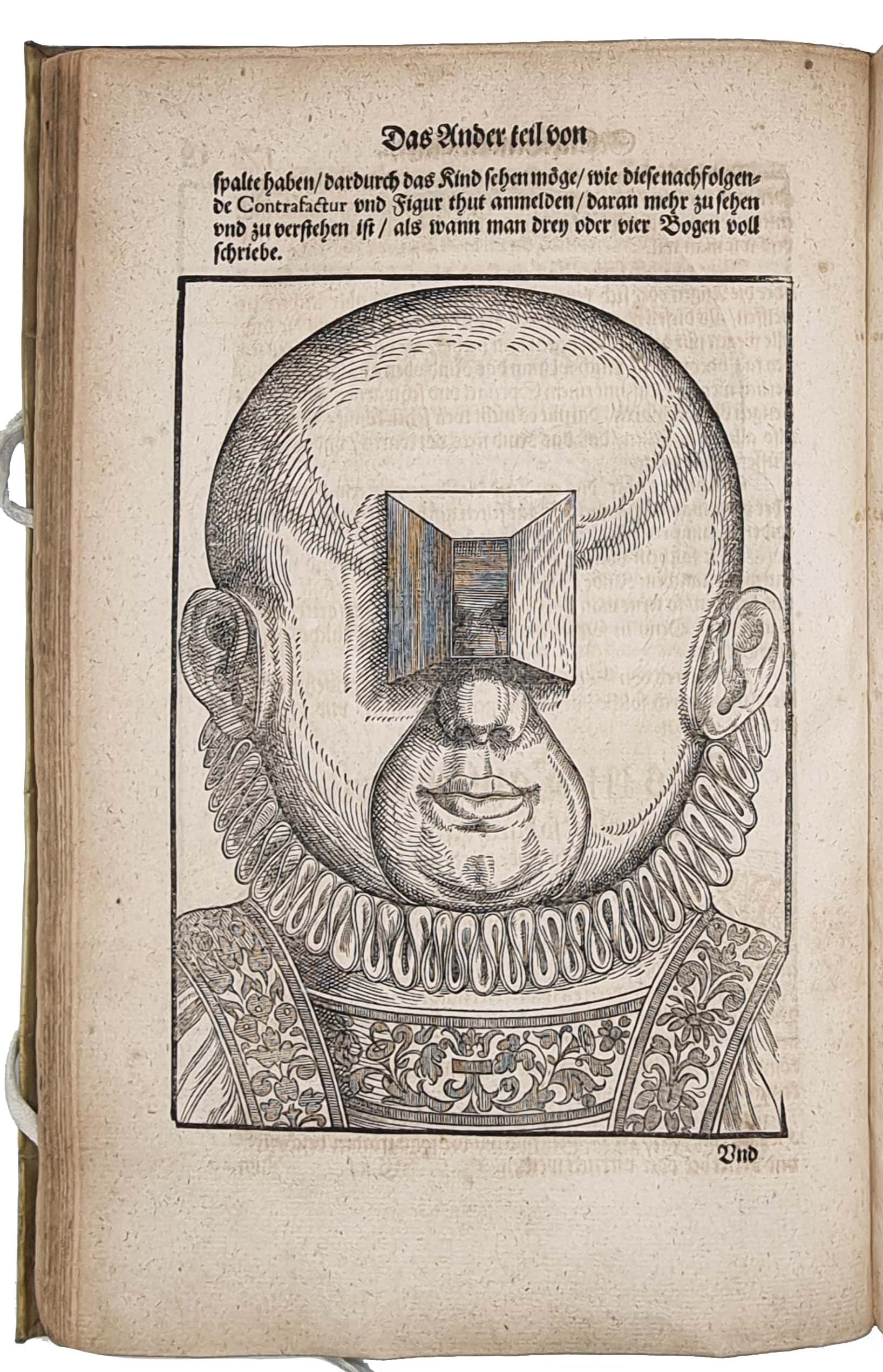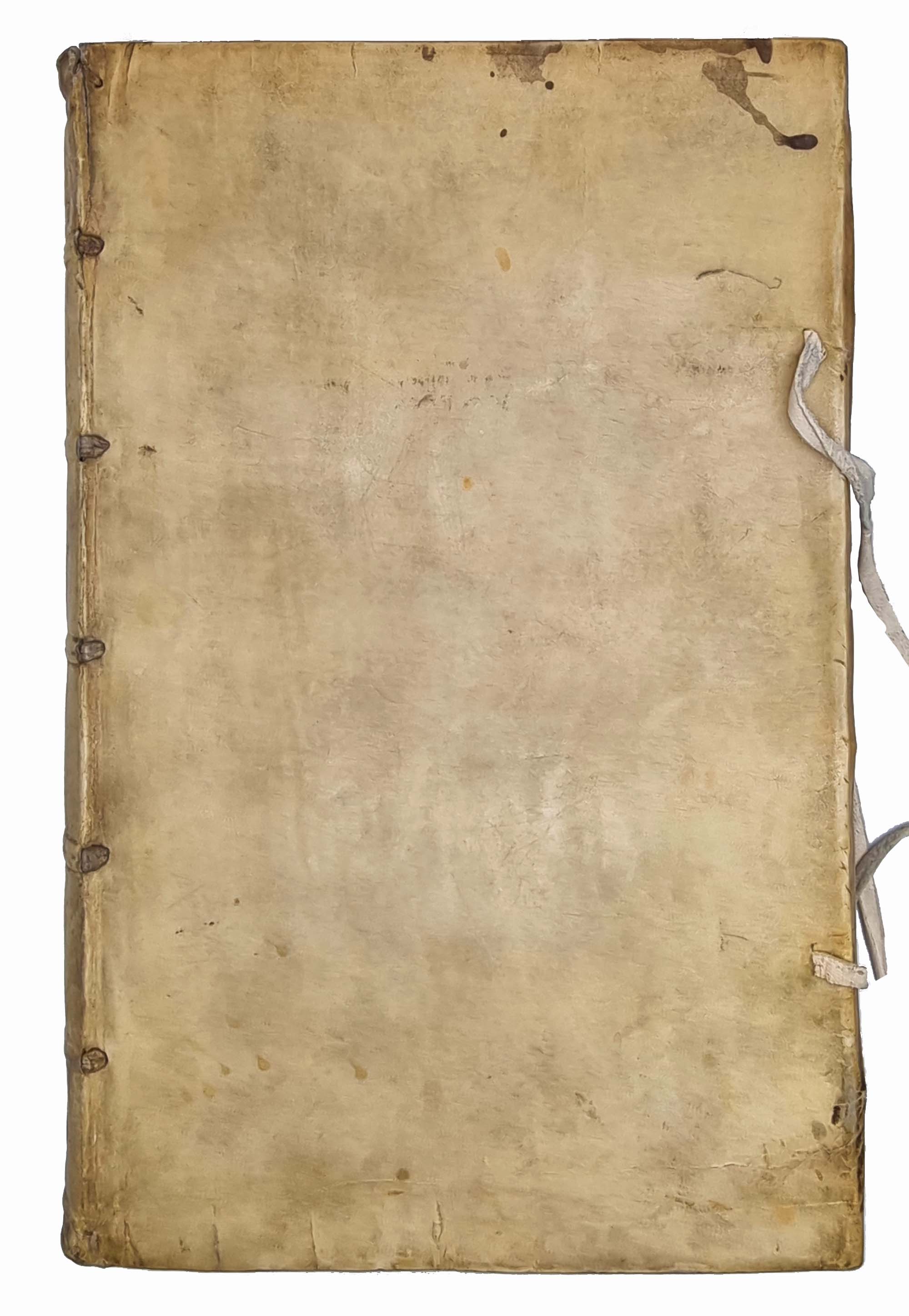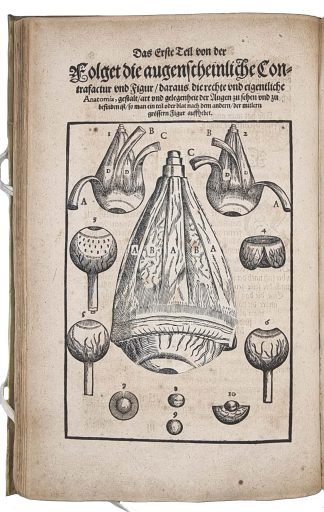BARTISCH, Georg.
THE FIRST BOOK ON EYE SURGERY
Ophthalmodouleia
Dreseden, durch Matthes Stöckel, 1583£75,000.00
FIRST EDITION. ff. (xxviii), 274, (viii). Gothic letter, little Roman and Greek. T-p in red and black within decorated woodcut border with grotesques, arms of Saxony and Dresden, repeated on C1, text within woodcut antique-style frames to C1 verso, very large woodcut arms of Duke August Elector of Saxony to A2, ½-page woodcut arms of Dresden to E3 verso, full-page woodcut author’s portrait to E4 verso. 88 handsome full-page woodcuts (with 11 paper overlays) of eye conditions, eye treatments (including spectacles), the body in relation to Zodiac, and utensils to produce and contain medicaments, decorated initials and ornaments. Uniform slight browning (low-quality paper), occasional very minor marginal foxing, minimal offsetting from woodcuts, small iron clips (bookmarks) to a dozen outer edges. A very good copy in contemporary vellum, yapp edges, two leather ties (renewed), raised bands, title inked to spine, old shelfmark label, small ink stain to upper edge of upper cover. Ms. ‘Sum And. Laubmarij I.V.D. [Iuris Utriusque Doctor] Emptus 1583’ and ‘H.H.H. Lundsgaard Kobenhavn 1921’ to front pastedown, C19 stamps of University of Tubingen and ‘Verkauft Doubl(?)’, and C16 ms. ‘88 pge. 155 bge. 3/30’ to t-p, one affecting two letters, the odd contemporary ms. note, C19 bibliographic inscription at foot of t-p blank verso, another to rear fep.
A very good copy of the first edition of this exceptional and ground-breaking medical book—the first on eye surgery and the first ophthalmic book in the German language. It provides the first comprehensive view of Renaissance eye surgery. Georg Bartisch (1535-1607) started his career as an itinerant surgeon in Saxony, Bohemia and Silesia. Having settled in Dresden, he became renowned for his surgical techniques to treat cataract and remove eye cancers; he used his vast experience to write ‘Ophthalmodouleia’. These achievements earned him the post of oculist to Duke Augustus I of Saxony, to whom the work is dedicated. Only 3 works on ophthalmology had been published before Bartisch’s, and none so lavishly illustrated. The woodcuts, probably sketched by Bartisch himself, were cut by Hans Hewamaul. ‘Two of the woodcut illustrations were produced with overlays showing anatomical parts lying successively one under the other. […] Bartisch was the first to illustrate the brain and the eye in this manner’ (Albert, ‘Introduction’, ii). The 13 chapters span the anatomy of the head and eye, eye conditions and their surgical treatments (with special attention to the five different kinds of cataract—Bartisch’s specialism), as well as pharmacopoeia. Very interesting are the sections devoted to strabismus and the ‘squint mask’—a medical instrument first mentioned in writing in the 7th century—covering the head and face in different ways (even with funnels around the eyes), according to the type of strabismus. Along state-of-the-art surgical techniques, a few sections reveal the unexpected role which superstition and popular religion played in Bartisch’s overall understanding of disease and cure. Two large woodcuts show handsomely portrayed amulets to be worn, round the neck, by people suffering from weak sight; among these are a heart with a crucifix, a pendant with a serpent wrapped around a cross, and a small book. A fascinating detail shedding light on the ‘marketing’ of early modern medicine is found in two woodcuts portraying a pair of pliers which can be used to ‘stamp’ the doctor’s name onto little ‘cakes’ used to administer medications. A most attractive medical work, with unusual illustrations.
This copy was purchased soon after its publication by Andreas Laubmar (or Laubmaier, fl. late C16/early C17), professor of law at Tubingen and councillor to the Duke of Wurttemberg.
Garrison-Morton (3rd ed.), 5817; Heirs of Hippocrates 369; Wellcome I, 697 (incomplete); Durling 479.In stock


